Oddly enough, there was at least one royal wedding of the late 19th and early 20th centuries which did not involve a relative or descendant of Queen Victoria! Another note of interest was that this wedding was of Europe’s only other reigning Queen and that her marriage to rather minor German noble also raised a similar fear of “Germanification” of her country.
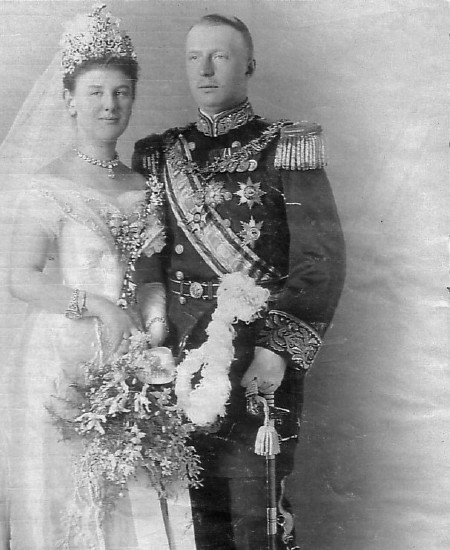
Wilhelmina came to the throne under a series of unfortunate events. The Dutch monarchy existed under a Semi-Salic law, which meant that “firstly all male descendance is applied, including all collateral male lines; but if all agnates become extinct, then the closest heiress (such as a daughter) of the last male holder of the property inherits, and after her, her own male heirs according to the Salic order.” By the age of four, all of Wilhelmina’s brothers and other male relations had died, placing her second in line. Her father, King William III, died when Wilhelmina was 10, and she ascended as Queen of the Netherlands, though her mother, Queen Emma, was named regent. The young queen was well-liked by her subjects despite the very democratic Dutch system of government, and Wilhelmina even won the favor of the highly critical Queen Victoria when she visited England in 1895.
The young Queen … still has her hair hanging loose. She is slender and graceful, and makes an impression as a very intelligent and very cute girl. She speaks good English and knows how to behave with charming manners.
When Wilhelmina reached the age of majority in 1898, the question of a husband to secure the succession was an immediate concern. As an 18 year old Queen in her own right, and ruler of a small, but influential country, she was vulnerable to all manner of royal fortune hunters and wily diplomats. Indeed, according to The New York Times, Wilhelmina was reportedly engaged to a number of Princes and Grand Dukes, including Prince Louis Napoleon, Victor Emmanuel, the Crown Prince of Italy, and King Alexander of Serbia. Adding to the pressure was the Dutch public’s desire for Wilhelmina to marry a descendant of the House of Orange, but the only elgible candidates were the Grand Duke of Saxe-Weimar and his younger brother, Prince Bernhard. Prince Bernhard had actually been raised with the expectation of becoming Wilhelmina’s consort, but she demurred, finding him “not handsome” and “not sensible”. Prince Bernhard then became depressed by her refusal and his death in 1900, at 22 was shrouded in mystery, with official reports declaring tuberculosis as the cause, and unofficial saying suicide. Shortly after this tragedy, Queen Wilhelmina announced her engagement to Duke Henry of Mecklenburg-Schwerin, no doubt under pressure after turning down the approved husband.
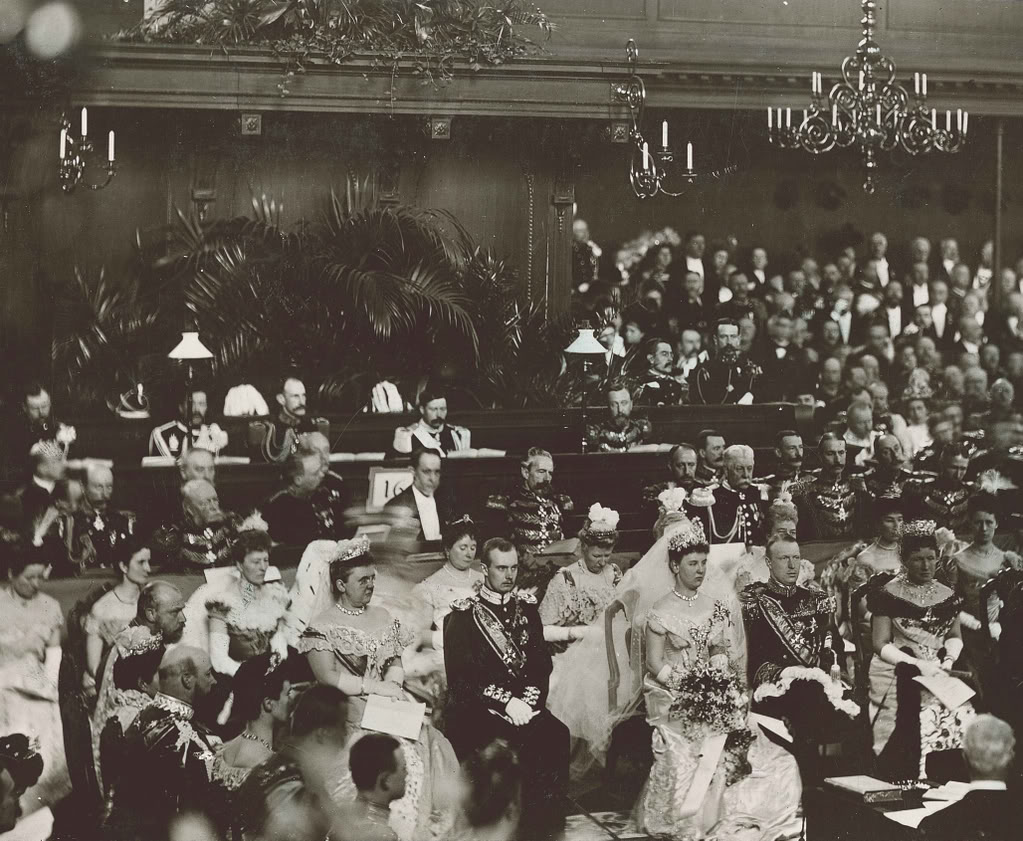
The date for the wedding was fixed for February 7, 1901, and was to take place at The Hague. As befitting a Dutch queen, the ceremony was to be simple and inclusive, with any Hollander who could make it to the ceremony invited as part of the audience. As also befitting an ever royal-mad press, The New York Times breathlessly recounted every detail of this wedding:
The ceremonies were the same simple and unritualistic rites of the Reformed Church by which the humblest of Queen Wilhelmina’s subjects are married. The whole spirit of the affair was plain and democratic, although costly gowns and jewels and showy uniforms furnished a regal stage setting. At the church the venerable pastor administered to the bride and bridegroom a caution that their high positions would not shield them from the common sufferings and sorrows of humanity.
The weather was crisp, sunny, and inspiriting. The city bore its most festal appearance. Vast crowds were in the streets early, and trains poured in thousands from all parts of the country. The route of the royal procession to the Groote Kerk was decorated with large baskets of green plants, lightened by orange blossoms and white roses, tied in large white knots. Thousands of Dutch flags hung across the streets.
The stands, the windows, and the roofs along the line of the route to the Groote Kerk were thronged with people. A big majority of the visitors were country folk, all prosperous and happy looking, many wearing the gala costumes which their ancestors, for several generations, employed for like holidays.
The procession, as a spectacle, was not noteworthy. Fifty Dutch Hussars rode ahead, then came a handful of Court officials, with the Grand Master of Ceremonies on horseback, then a gilt coach with the Queen and Duke Henry. Their mothers’ coach came after it, and then the chief military officials of the palace, the Governor of the city, two Adjutants on horseback, and lastly, a group of fifty mounted artillerymen.
At n o’clock the marriage party emerged from the Palace to proceed to the Palace of Justice. Their appearance was announced by a cheer which was heard for squares away. Queen Wilhelmina passed down the steps on the arm of the uniformed Duke, with her great, white wedding dress sweeping behind her, and the Queen Mother, in purple, and the Grand Duchess Maria and half a dozen ladies of the Court followed in groups. The Generals and Admirals, fairly gleaming with gold lace and medals, standing at a salute on both sides, made the whole a truly regal picture.
The ponderous gilded coach presented by the people of Amsterdam was drawn by eight horses, gaily decorated with orange colors. In the White Hall of the Palace of Justice six high officials waited, as witnesses. They, with the Minister of Justice, Dr. Van der Linden, were the only persons besides the Queen Mother and the Grand Duchess Maria and two or three clerks, who saw the signing of the contract. The six witnesses were the Speakers of the two Houses of Parliament, the Adjutant General, Van Bergambacht; the Grand Chamberlain, General Count du Monceau; the Vice-President of the Council of State, Mynheer Van Schorer, and the Chief Justice.
The ceremony was very brief. The bride and bridegroom, the Queen Mother and the mother of the bridegroom, and the witnesses, inscribed their names upon the official document. The Minister of Justice first asked the mothers, according to the usual form, if they had any objection to the marriage, and they answered in the negative, amid general smiling. Immediately after the civil ceremony the procession started for the church.
Luncheon was given in the palace after the church ceremony, the two families, the Ministers of State, and the witnesses attending. The tables were loaded with State plate, gold and silver, and beautifully decorated with white flowers. The Queen Mother toasted the young couple and Prince Heinrich responded. The Queen and Prince Consort arrived at the railway station with a party of guests at four o’clock in the afternoon and boarded a special train waiting there to take them to Loo Palace.
Queen Wilhelmina’s wedding dress was of equal concern. It was designed by Madame Nicaud of Paris, and had a train of two yards and thirteen inches. The material had been woven expressly for Her Majesty and was of white satin brocaded with fine silver thread. The bodice had a square neck demi-decolette, edged with pearls, and the front of the dress from the opening at the neck was filled in with white Chantilly lace. The skirt was of white taffeta and decorated with embroidered bands designed to emulate a garland of orange blossoms joined by its leaves and a knotted ribbon. Queen Wilhelmina’s jewelry was simple, comprising only of pearls.
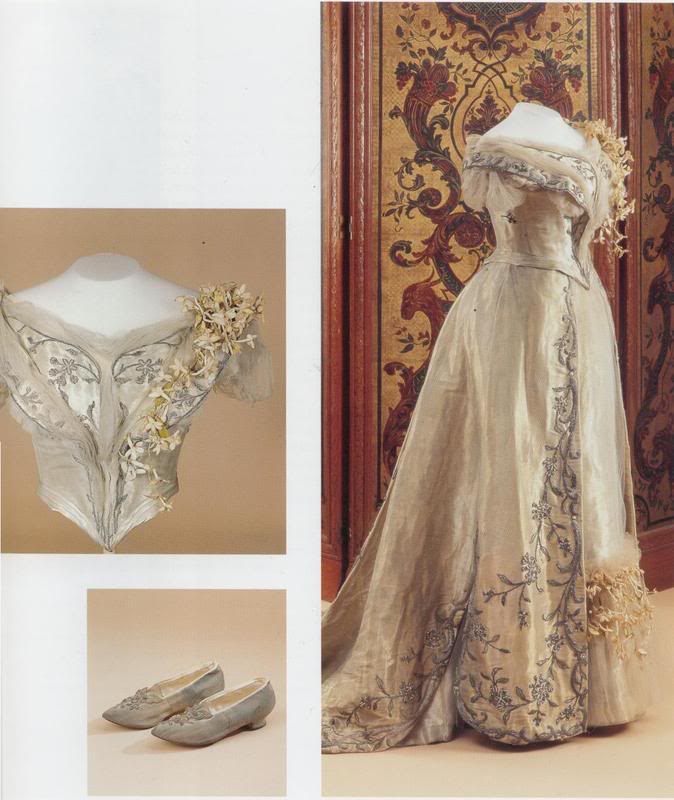
Unfortunately, for all the pomp and goodwill, the marriage was not happy, and rumors about the relations between the Queen and her consort leaked out of the royal palace within months of their wedding. Compounding their friction were the heartbreaking miscarriages Wilhelmina suffered between 1901 and 1906, which lead to fears that if there were no heirs, the Dutch crown “was bound to pass into the possession of a German prince, whose birth, training, and affiliations would naturally have led him to bring Holland within the sphere of the German Empire, at the expense of her independence, both national and economic.” The birth of a daughter, Juliana, in 1909, was of great relief to many, though Queen Wilhelmina suffered another set of miscarriages three years later. Nevertheless, despite her marital troubles, Wilhelmina proved a shrewd and forceful Queen, openly supporting the Boers and their exiled President during the Second South African War, possessing a keen sense of business which made her one of the richest women in the world, and even granting asylum to Kaiser Wilhelm II after he fled to the Netherlands.

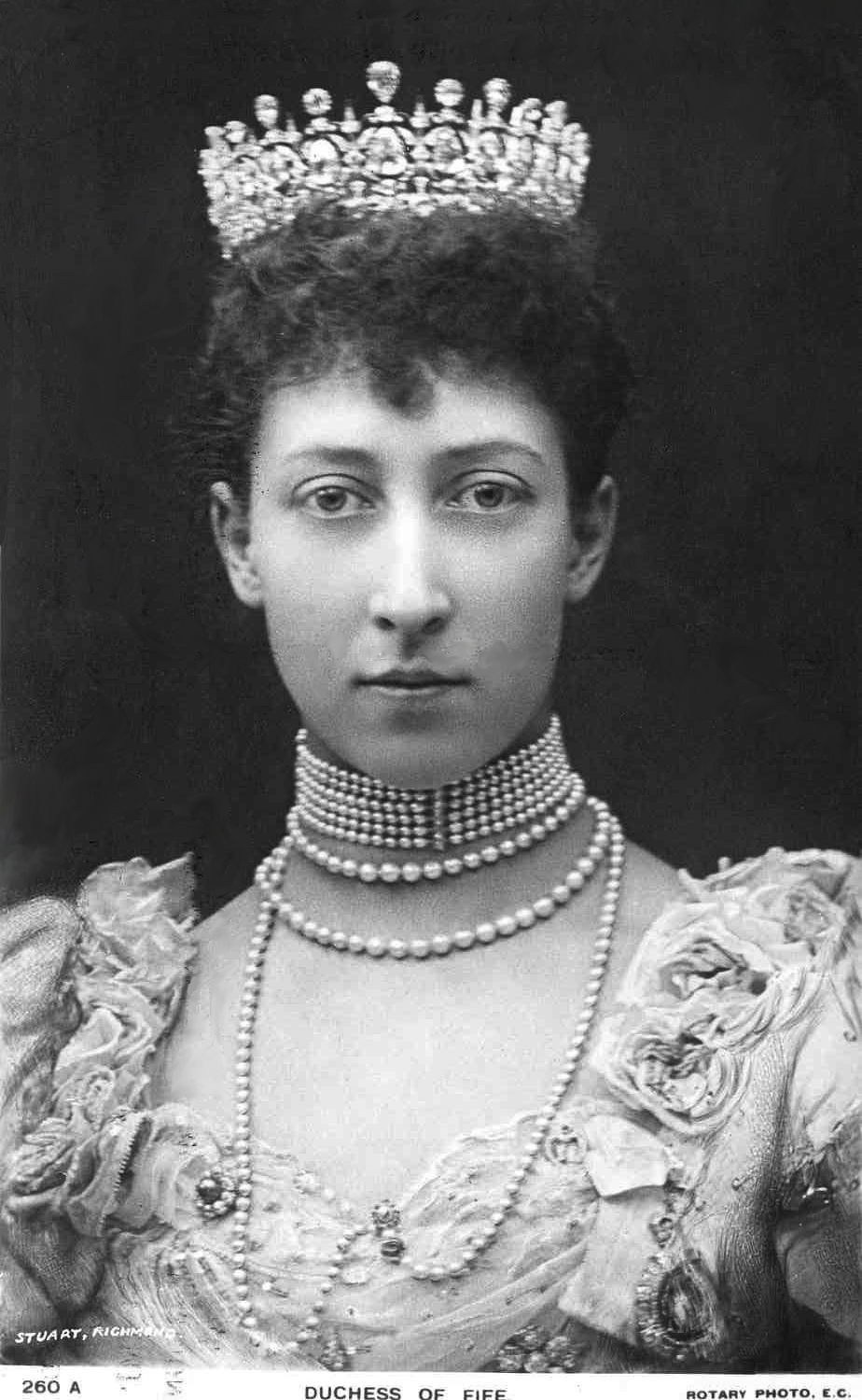
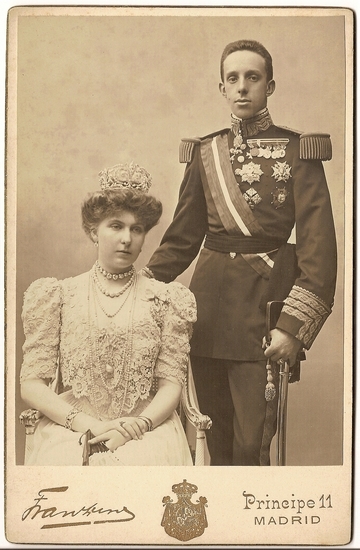
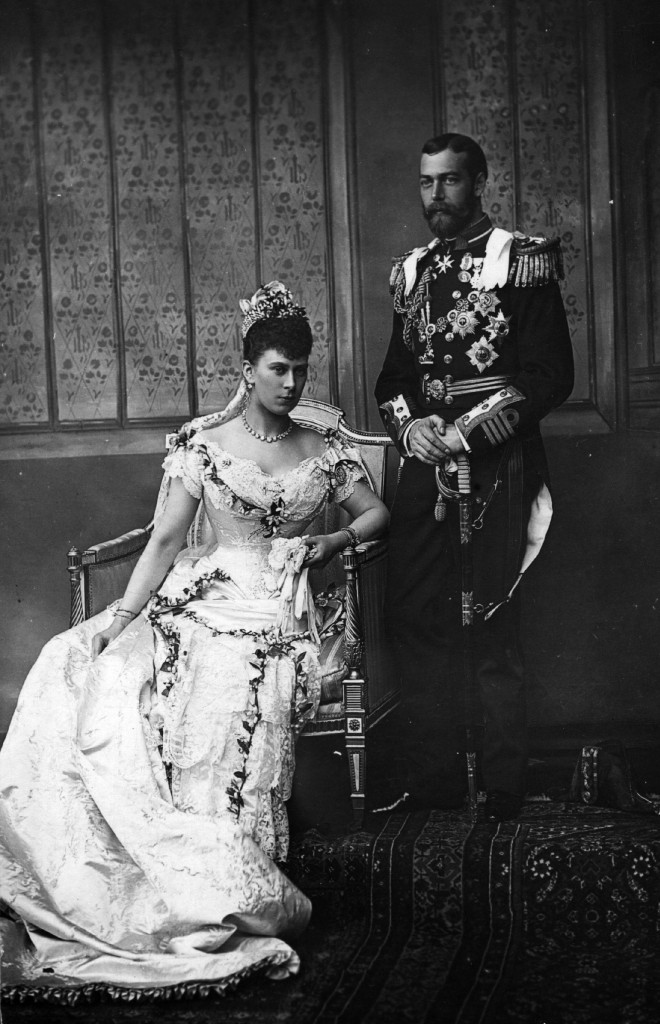

Wonderful article Evangeline! I love Wilhelmina’s wedding gown. I’ve also enjoyed your series on all of the different weddings, but I think I’m more partial to this one about Queen Wilhelmina’s because I’m Dutch on both of my grandmother’s mother’s side of the family. Which I didn’t find out until a few years ago.
Thanks Michele!
And I have Dutch ancestry on my mother’s father’s side of the family, so I am partial to Wilhelmina’s story as well. 😉
Queen Wilhelmina was wearing priceless diamond jewellery at her wedding, not pearls.